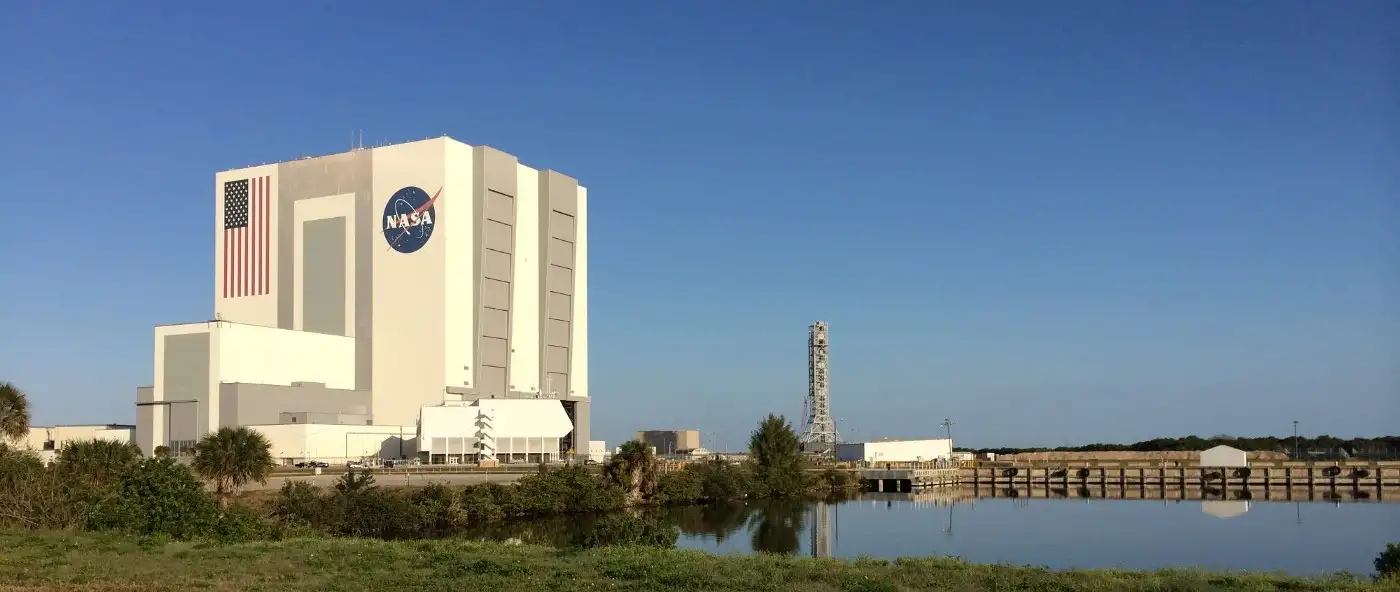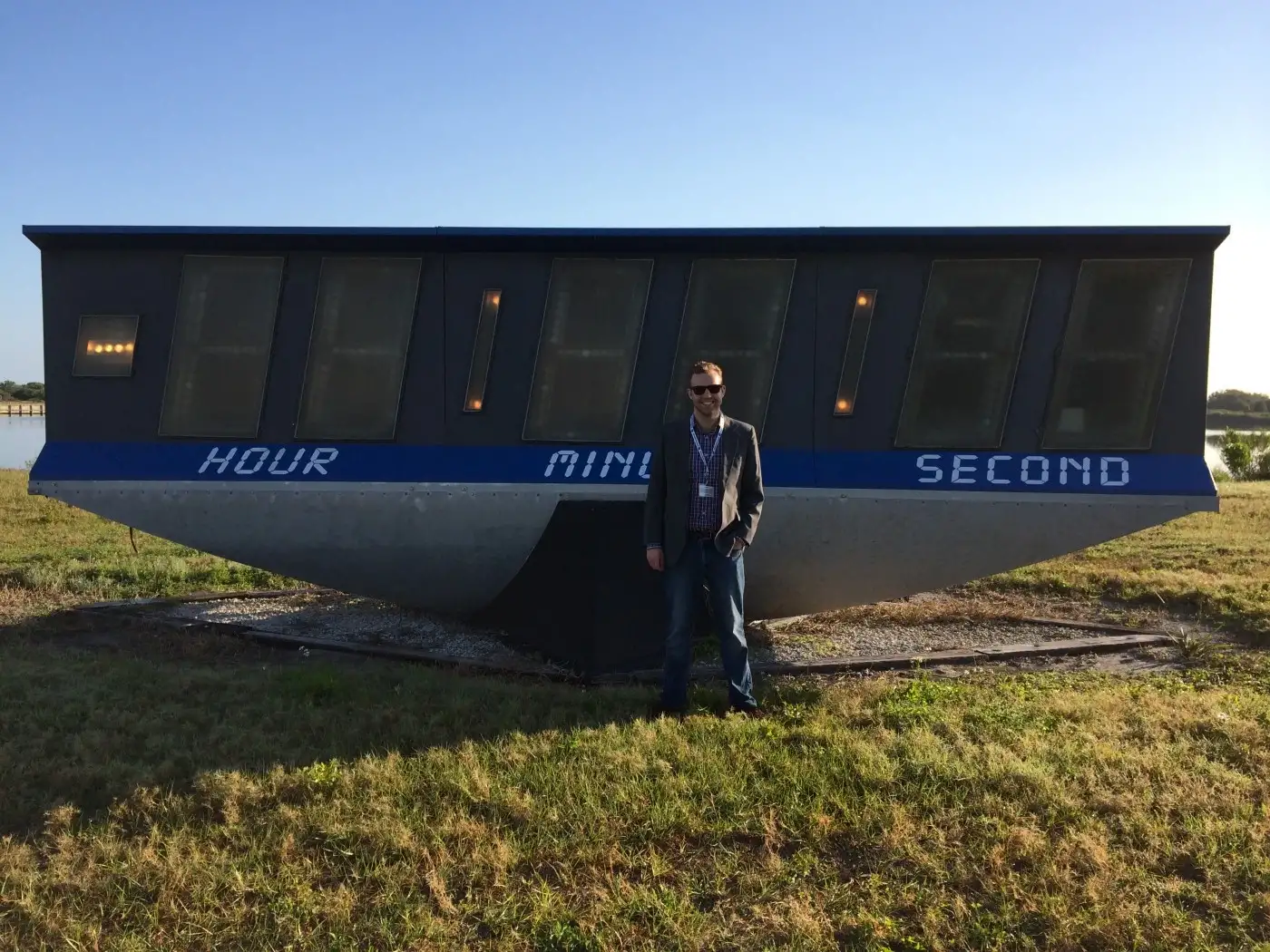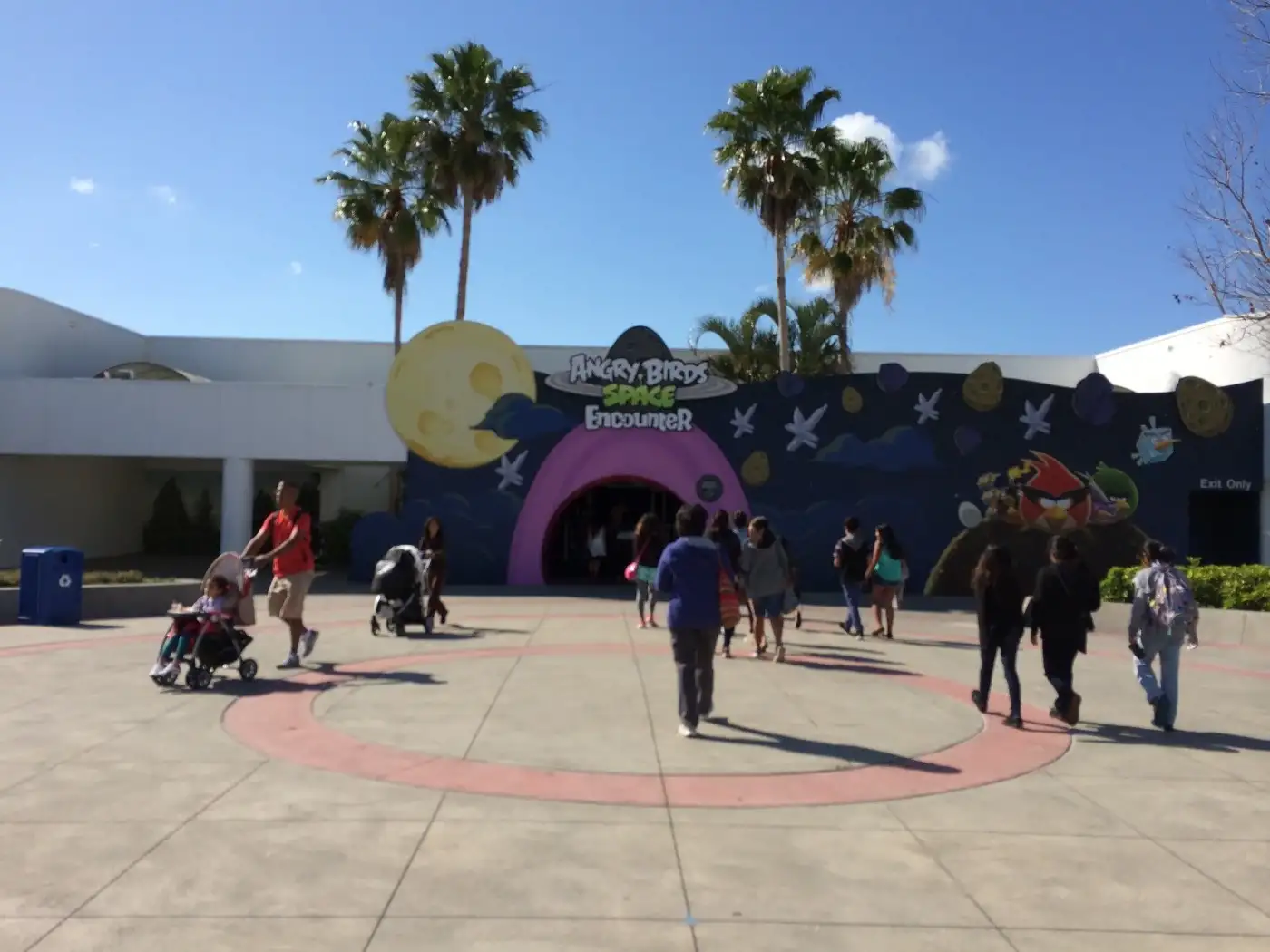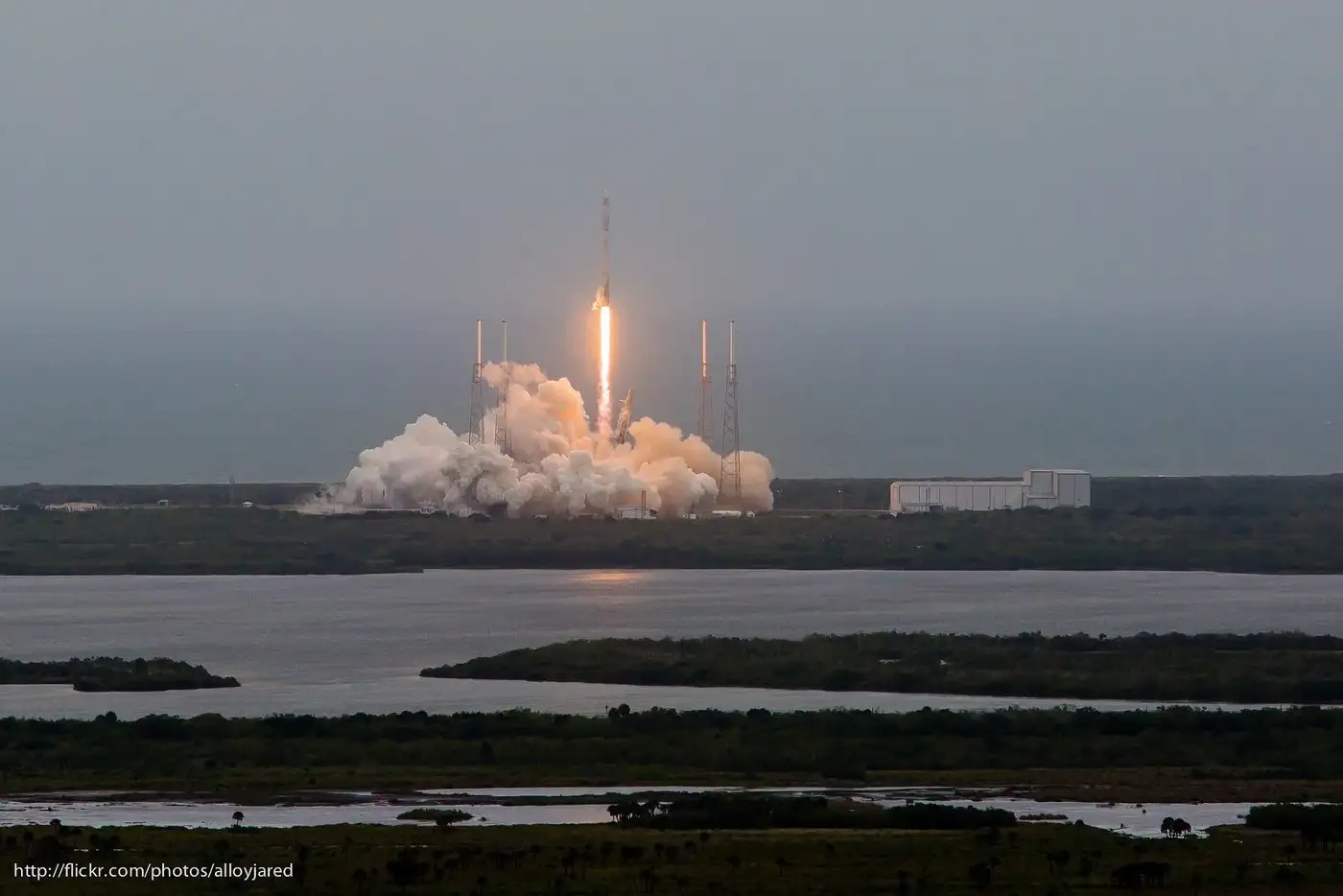NASA Social at the Kennedy Space Center

Wandering the grounds of the Kennedy Space Center is a bittersweet experience. To visit a place that loomed so large in the imaginative geography of my childhood — to see that it’s an ordinary place run by ordinary people — is kind of a shock.
This is my impression as I stand there, in March of 2014, gazing out from the parking lot of the gargantuan Vehicle Assembly Building. In the distance is a launch tower, which a former Kennedy employee informs me is lovingly referred to as “the world’s largest coat rack.” It hasn’t been used in years.
This place that once represented the beating heart of American scientific achievement sits dormant and listless. It was grand once, and for all I know it will be grand again. But I feel like I’m seeing it either twenty years too early or forty years too late.

I’m here because I’ve been selected, along with about 30 others, to visit Cape Canaveral as part of NASA Social, a program that grants press passes to space enthusiasts (or, at least, those who express interest on Twitter) as part of an effort to raise awareness and promote citizen journalism about the space program. The event: CRS-3, a commercial SpaceX launch to resupply the International Space Station.
The trip was almost over before it started. A couple of days prior to leaving, I received an email from the NASA press office explaining that the launch was being rescheduled — the SpaceX engineers had discovered a mysterious residue on the capsule’s impact shielding blanket. Rather than risking the payload, they decided to put the launch on hold until they could find the source of the grease. The press office gave my fellow participants and I a choice: we could come down as scheduled and tour the facilities, but not see the launch; or, we could fly in for the next launch date instead.
It was a risky proposition — there are never any guarantees in spaceflight, and even if I changed my flight, there was a chance it would be rescheduled again. By now, most of the NASA Social participants were already active in a private Facebook group, and there was much agonizing over whether to come down as scheduled or hold for a week.
In the end, I decided to fly down as scheduled, as did around thirty others. The truth is, some events in my personal life had sent me spinning, and I needed a change of scenery. A few days in Florida couldn’t come soon enough.
Cape Canaveral has such a hold over the American psyche that seeing it in person was bizarre and disconcerting. Everything is built so large that it’s difficult to get a sense of scale around anything. The Vehicle Assembly Building is a behemoth — only the flag painted on its side can provide any sense of scale. The stars are each six feet tall; the stripes, as wide as a highway lane. The inside is a single continuous space, fifty-five stories tall. If their climate control ever fails, the interior gets its own weather — supposedly, it’s rained inside the building.
The nearby air is rarified by its proximity to history. There’s a sense that the center is dormant, asleep — as if it could come to life again and resume its glory days. Inside the VAB, our tour guide keeps pointing at things and telling us what they’re left over from. “This is here from the Shuttle program.” “Oh, that’s still here from Apollo.”
There’s something a bit Wizard of Oz about the whole experience. To see that a legendary place, so vivid in the mind’s eye, is actually just a regular location run by a bunch of people who think of it as their day job… it can’t help but be disappointing, or at least different than expected.

One of the most fascinating things about the CRS-3 trip was seeing the variety of people in my cohort. I wasn’t sure what to expect — who applies for something like NASA Social?
The answer is: all kinds of people. Young and old, from a plethora of personal and professional backgrounds. Some had been to numerous NASA events; others, like me, were indulging a casual enthusiasm. Some were local and went to launches frequently; others flew in from as far as the West Coast.
More interestingly were the levels of enthusiasm. Most of us had a healthy level of tempered enthusiasm. I met numerous attendees, however, who had a near-zealous devotion to all things NASA, and seemed unwilling to recognize that the melancholy surrounding some of the locations and artifacts was less the patina of age and more the rust of underuse. Or perhaps that was entirely in my head, and I was simply seeing what I expected to see.
I won’t bore you with a full itinerary of everything we did. Suffice it to say: NASA felt bad that we weren’t seeing the actual launch, and they found some interesting ways to fill our schedule. We got to see some scientific presentations (CubeSats and the first plants to be shipped up to the ISS among them), we toured the Vehicle Assembly Building, and we took a bus out past the more notable launch pads, including the one from which Apollo 11 was launched.
Looking back after two years, what strikes me about the trip isn’t any particular thing, but rather a feeling. A sense of hope and loss when I think of our space program: what it once was, what it has become, and — in a different world with different priorities — what it could have been right now.
NASA doesn’t much resemble its depiction in The Martian. It’s under-funded and treated by the public like the government’s quirky stepchild, who’s only allowed to play with the chemistry set as long as it doesn’t get in the way of anything more important. Strange to see the heroic devotion once felt by the American people towards the space program transformed into a mild curiosity. So much for the ticker tape parades.
Even the NASA Social program itself inspires mixed feelings. I’ll be forever grateful for the opportunity to visit a place that loomed so large in my young consciousness. But the idea of NASA — NASA! — having to resort to something as pedestrian as Twitter in an effort to build awareness and interest is dejecting.
This should be holy ground for everyone with even the mildest grasp of history. And yet, in the public part of the complex alongside the gift shops and museum exhibits, the Kennedy Space Center plays host to “Angry Birds Space Encounter.”

The Kennedy Space Center is the place where Grissom, White, and Chaffee died. The place where the crews of Challenger and Columbia last felt solid ground before slipping the surly bonds of earth and touching the face of God. Shouldn’t we at least give it the dignity of such a place?
The engineers eventually found the source of the residue that postponed the launch. Turns out it came from a sewing machine they used on one of the few cloth parts of the rocket assemblage, transmitted via a single piece of thread. Spaceflight is finicky.
After several additional delays for a variety of reasons, CRS-3 finally launched on April 18th, almost a month after I was there. Some of my fellow NASA Social attendees made it back for the event, taking some extraordinary photos along the way. One of them was even allowed onto the roof of the Vehicle Assembly Building to see the view from fifty-five stories up.

I would like to see a launch in person someday. Better yet, I’d like to see a launch and landing, as recently made possible by both SpaceX and Blue Origin. I’m not sure I’d apply for NASA Social again, though I’d accept an invitation in a heartbeat.
Visiting the Kennedy Space Center was an extraordinary opportunity that I’ve spent almost two years processing. Lest you think me too negative, let me emphasize how enjoyable and memorable the NASA Social experience was. I hope to see a day when the space program is met with renewed enthusiasm and respect, and NASA no longer needs such a program to build interest.
I can’t help but think that Kennedy is a microcosm of the space program as a whole. Anyone watching a video of the history of spaceflight without context would think it was going in reverse — we went to the moon, and then developed reusable space shuttles, and now all we have is a tiny lab in earth orbit. We can’t even launch our own astronauts anymore — we rely on the Russians to do it. And, in half a century of human spaceflight, we’ve never even left our neighborhood.
The recent rise of commercial spaceflight is a massive step in the right direction. The future of exploration lies not in solely state-funded missions, but in joint ventures between the public and private sectors. I hope to see within my lifetime a human set foot on Mars; permanent settlements on the Moon or beyond; robust space-oriented business ventures; and the mining of resources that will eliminate scarcity and transform the global economy.
These things are getting ever-closer; all we have to do is keep pressing forward. Maybe, in this area at least, our reach will match our grasp.